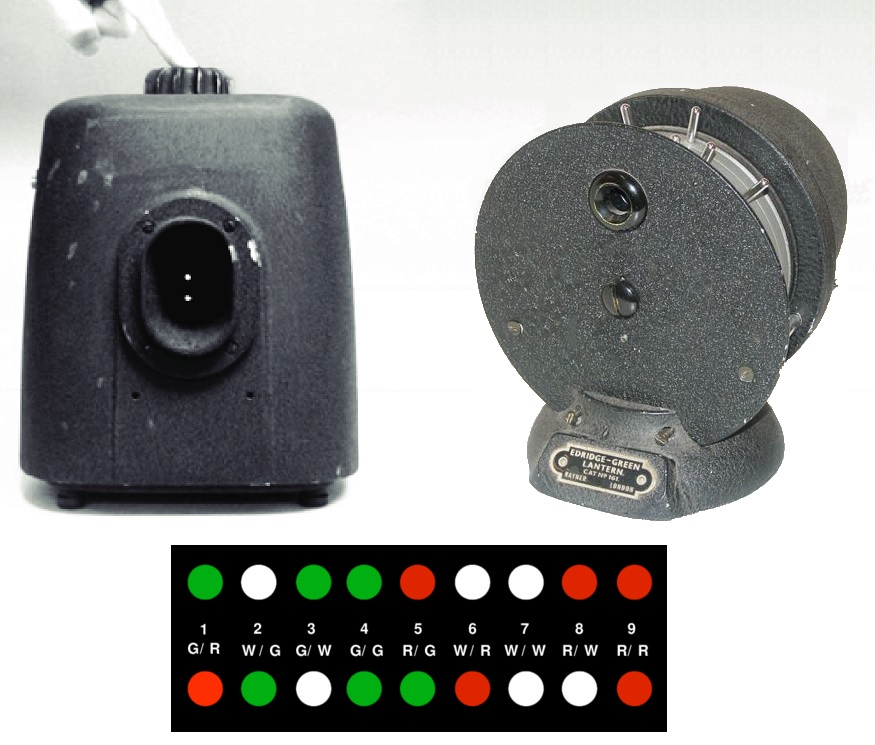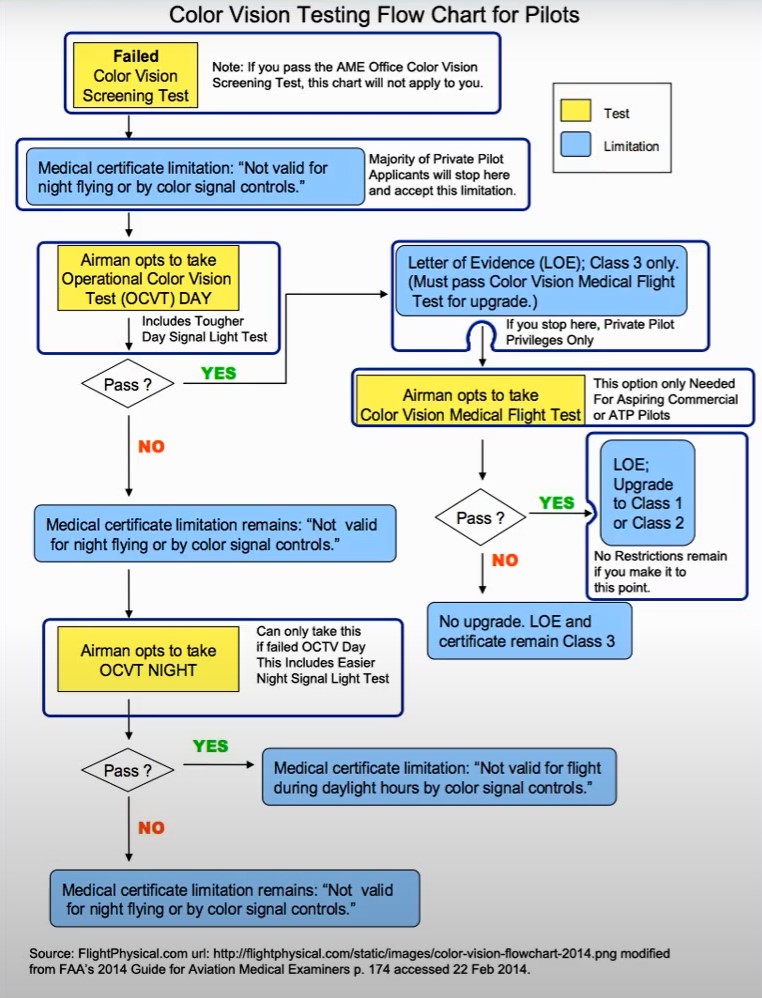Farnsworth Lantern Color Blind Test
Contents
- History
- Test Procedure
- Results Assessment
- Test Evaluation
- Usage in Aviation
- Sensitivity of the online Lantern Test
The Farnsworth Lantern Test, or FALANT, is a color blind test, originally developed specifically to screen sailors for tasks requiring color vision, such as identifying signal lights at night. It screens for red-green deficiencies, but not the much rarer blue color deficiency.

History
The test was developed by Dr. Dean Farnsworth (Commander, United States Navy) while stationed at the Naval Submarine Research Laboratory in New London, Connecticut during World War II. After its adoption by the United States Navy in 1954 as the standard color vision test for sailors aboard ship, it has additionally been used to screen flying personnel.
Test Procedure
The test consists of showing a pair of vertically oriented lights consisting of combinations of either red, green or yellow-white. The test subject is asked to identify the two colors (some of which are identical). Nine color pairs are administered during the test, beginning with a red/green combination, to allow the patient to see these two colors prior to seeing a white light, which decreases testing errors. The examinee is shown the target for only two seconds, as color-deficient patients can sometimes correctly identify the colors with prolonged exposure. The yellow-white light, or one of the identical paired lights, employs a 50% neutral gray filter to reduce luminance cues to the color-deficient patient. Random presentation reduces memorization of the test sequence by motivated persons.
Results Assessment
Errors by color-deficient patients tend to be of two types. The first is miscalling the white light the complement of the colors presented. For example, red-white is said to be "red-green", or green-white is called "green-red". The second is when a pair of lights of the same color but differing in brightness by 50% is displayed, the brighter identical color is said to be "white". For example, green(dim)-green(bright) is called "green-white". Dichromats, by definition, cannot distinguish any of the colors, and only make correct answers by random guessing.
By design, the FALANT allows mild color-blindness conditions to pass the test, while still excluding most of the moderate or severe cases of color-deficiency. The test is intended to mimic the types of situations requiring color vision that a sailor would find while serving aboard a ship. A passing test is no mistakes in the first nine pairs, or only two mistakes in the eighteen presentations shown to the examinee.
Test Evaluation
Research has shown a sensitivity of only 25% for detecting color vision deficiencies, and occasionally the FaLant allows moderate or even severely color deficient trichromats to pass, especially if given enough attempts with allowed errors, or given improperly by the technician. Administration errors are frequent, when not given in the correct lighting conditions, timing or distance.
Testing errors are reduced by standardization of the verbal instructions, rules for administration, and scoring method. Four important phrases are:
- "Remember, only three colors - red, green, and white"
- "They look like signal lights at a distance"
- "Call out the colors as soon as you see them"
- "They can be in any combination or the same"
Usage in Aviation
The FALANT is accepted by the United States Federal Aviation Administration as a test of color vision for the purpose of obtaining a pilot's license. However, the United States Air Force discontinued use of the FALANT in 1993 due to its frequent failure to identify cases of color blindness considerably more serious than the test was intended to let pass.

Online Lantern Test
The online test consists of showing pairs of vertically oriented lights. Combinations of either red, green or yellow.
The maximum score on the test is 18 (6 red, 6 green, 6 yellow). 100% score is when the number of errors is 0. The online test has a sensitivity of 89.29% and a specificity of 94.44%. The test has a positive predictive value of 96.15% and a negative predictive value of 85%. The original Lantern test has only about 25% specificity.
In the case, if one error is allowed to pass the test, the sensitivity is 83.93%, specificity is 100%, positive predictive value is 100%, and the negative predictive value is 80%.

The online test detects color blindness with reliable efficiency, but like the original test, does not differentiate between the types of color blindness.

